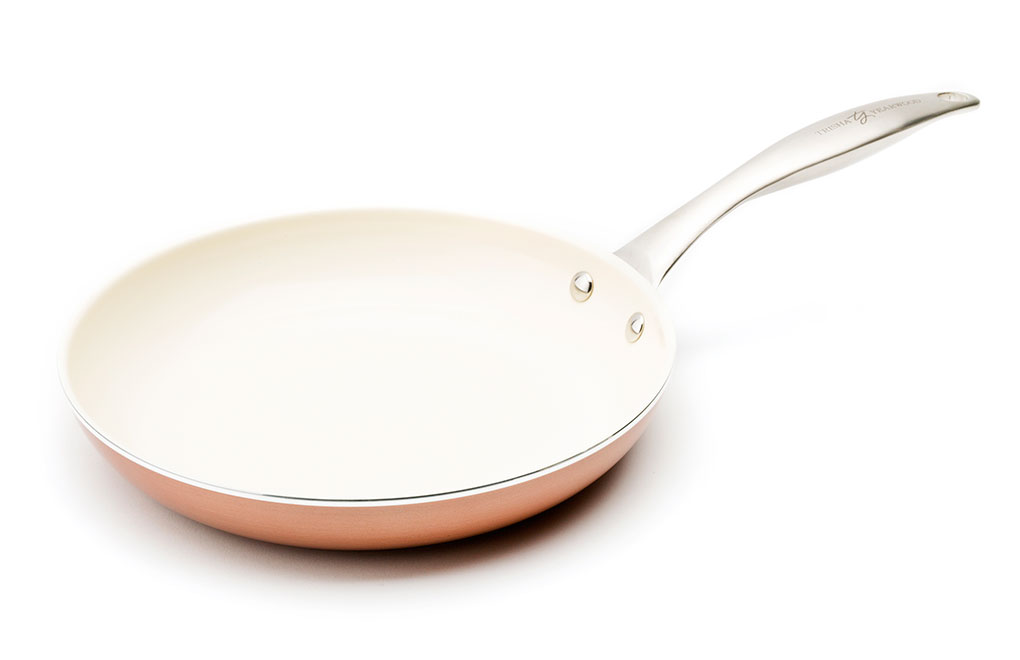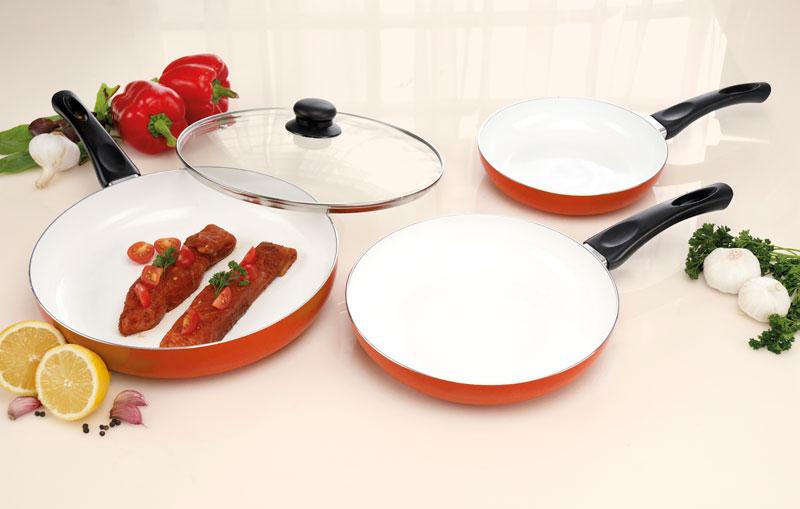If you happen to visit a kitchen store, you’ll notice commodities of ceramic cookware. They are either glazed or unglazed. The glazed type, which has become quite common come in varied colors. It is often used for sauteing and frying because its smooth non-stick surface makes it a cinch to clean. Unglazed ceramic absorbs water because it is porous. Hence, it is suited for steaming and boiling.
If you are one to who loves to match your kitchen’s design with your cookware, ceramic cookware will let you do it easily, because it is available in various patterns, styles, and colors. It is durable. It requires no polishing. It does not rust, and it does not scratch, chip or peel.
High-quality ceramic wares are safe and won’t leach out harmful toxins into your food making it a safe option for your family. It is not flimsy and can easily withstand being knocked over. It can serve you a lifetime with proper care.
Ceramic cookware is very flexible. It easily beats the competition in this area. It is not picky with heat. You can crank up your gas, and it and your food will remain fine. If you don’t want additional serving dishes to wash, no problem, ceramic cookware can go from your stove top to your kitchen table. Do you need to heat up food in a microwave or oven? Use ceramic ware. Any leftovers that need freezing? You can freeze it in your ceramic pot. Talk about ease of use.
Whatever cookware style you need; a baking pan, a skillet or a stockpot, you will almost always find one in ceramic. If you wish to start using ceramic cookware, purchasing a set may save you some cash. A number of kitchen companies provide discounts for starter kitchen sets. You can easily find a discounted ceramic cookware set. A set will enable you to enjoy the benefits of using ceramic pots and pans.
The major downside of ceramic cookware is that it is usually more expensive than other cookware types. However, if you consider that it can readily outlast other cookware class, your initial investment would be well worth it.

When it comes to cleaning, you don’t need to call on your muscle power to make your ceramic pots and pans gleaming. All it takes at most if there are no burnt foods, is a soft sponge, an ordinary detergent, and water. Sometimes a paper towel or wet cloth may even suffice. Avoid using the dishwasher as frequent use may wear down the glaze. If you accidentally burned food in ceramic cookware, there are a few cleaning techniques you can follow, like soaking the surface it in a mixture of vinegar, baking soda, and water.
If it is your first time to use ceramic for cooking, there is nothing to worry. You can use any kind of utensil with it. Ceramic cookware may take a while to heat up, but once it does, it spreads heat evenly throughout the pot or pan and retains it for longer. You may start initially with a low heat setting and gradually move it higher until you determine how your cookware perform with your stove.

